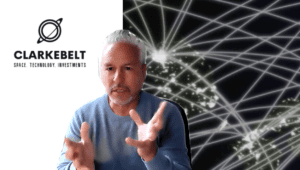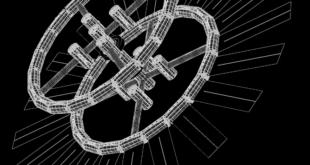by Luisa Low

During this week’s Space Café episode, SpaceWatch.Global publisher Torsten Kriening had the opportunity to speak with a former colleague – renowned space industry expert, President and Founder of Clarkebelt Space, Robert Feierbach.
Having worked in space business development across Europe and the United States, Robert’s experience is almost unparalleled, having performed an impressive number of C-suite responsibilities at well-known space and satellite companies, including Space X, SES Satellites, Eutelsat and the Swedish Space Corporation.
During this week’s discussion, he gives insights into the space industry’s global outlook and how the last ten years have seen a total disruption of satellite and launch industries.
Enter SpaceX
Until a decade ago the space launch sector was dominated by a handful of very large, highly resourced companies, who had little to no competition, such as in the case of Russia’s Proton launch system.
At this point in time, the mantra among the space community was undoubtedly “bigger is better”, with satellite payloads weighing up to 7 tonnes being launched. This all came to a head when the Proton program experienced three launch failures in the period of just 18 months – spelling a need for a different, less risky approach.
Enter SpaceX – whose small, re-usable and affordable satellite vision acted as a circuit breaker to the decades-long trend of launching ever bigger, heavier and expensive payloads.
“They really disrupted a lot of the “steady state” development that was going on with these other players”.
Fast forward to 2021 and there are now 150 companies worldwide that are active in developing small launchers. While not all will succeed, the industry’s new mantra is: “throw lots of ideas the air and eventually one will land”.
“We’re going to have 50,000 satellites in the next ten years, potentially.”
Flipping launches on their head
How payloads are launched is also being disrupted. While many satellites are still launched vertically – as has been the standard since spacefaring began – increasingly, horizontal launch systems are being pioneered by companies, such as Virgin Orbit and Pegasus.
The benefit of this launch re-configuration, Robert says, is that payloads can be launched above the clouds, effectively operating outside adverse weather, making them less reliant on specific or unfeasible launch windows.
Changes in materials science and the advent of 3-D printing have also changed how rockets are manufactured – with many structures now being fabricated using strong, but lightweight, carbon fibre technology.
From risks are born new industries
As we learnt in our previous Space Café episode with Dr Darren McKnight, the growing number of satellites in Earth’s orbit are increasing the risk for space collisions.
It’s not an issue that should be taken lightly, according to Robert, who says erosion of infrastructures, such as pieces of chipped paint and even propellant leakage, have the potential to become destructive missiles travelling at 28,000 kilometres per hour.
“We’re estimating there’s about 600,000 objects in the 1 to 10 centimetre category. Then in the next layer down, the millimetre category, we’re estimating about 150 million objects are out there today.”
However, the cataloguing of these minuscule – yet rapid and potentially deadly – objects is opening up a new industry, with companies like EXO Analytic, Leo Labs and Spain’s GMV, attempting to provide analytics to better detect and track space debris.
New techniques and research are also being developed by companies to develop “green” alternatives to highly toxic launch propellants. However, according to Robert, it remains to be seen how quickly non-toxic propellants will make their way to the market.
“They say, “yes, we’re going down that route, we’re going to be responsible… we want to be cognisant that we can’t pollute the whole earth”.”
To listen to Robert Feierbach’s insights into the space industry, you can watch the full program here:
Space Cafe is broadcast live each Tuesday at 4 pm CEST. To subscribe and get the latest on the space industry from world-leading experts visit – click here.
*Luisa Low is a freelance journalist and media adviser from Sydney, Australia. She currently manages Media and Public Relations for the University of Sydney’s Faculty of Engineering.





